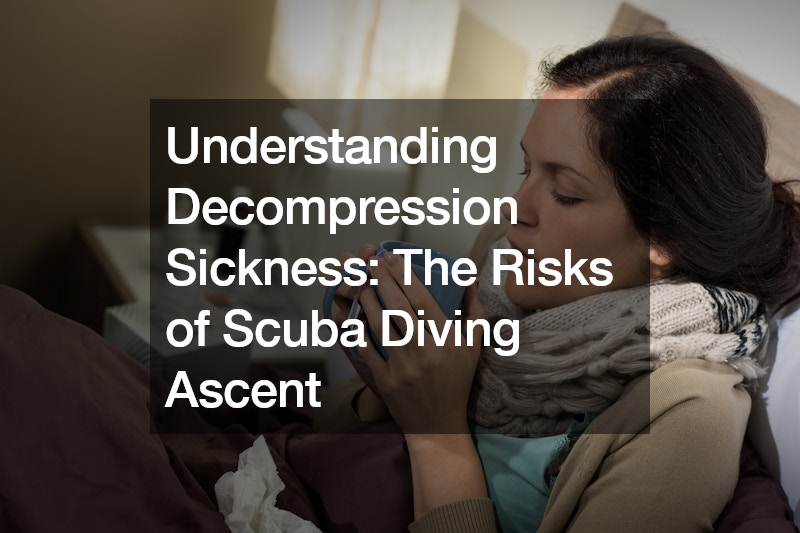Understanding Decompression Sickness The Risks of Scuba Diving Ascent


Scuba diving unlocks a world of underwater beauty and adventure. Yet, divers must know the potential dangers of rapid ascent. One such risk is decompression sickness (DCS), a serious medical condition that can occur if inert gas bubbles form in the bloodstream and tissues during decompression.
What is Decompression Sickness?
Imagine a can of soda. As you open it, the pressurized gas (usually carbon dioxide) rapidly escapes, forming bubbles in the liquid.
Decompression sickness works similarly with divers. While underwater, divers breathe compressed air, primarily consisting of nitrogen (an inert gas not used by the body). Under pressure, nitrogen dissolves harmlessly into the bloodstream and tissues.
However, the pressure surrounding the diver decreases during ascent. This dissolved nitrogen needs time to leave the body through the lungs safely. If a diver ascends too quickly, nitrogen comes out of the solution too rapidly, forming bubbles in the bloodstream and tissues. These bubbles can block blood flow, causing various symptoms depending on location and size.
Symptoms of Decompression Sickness
Decompression sickness symptoms can vary greatly and appear immediately or hours after a dive. Some common signs include:
Joint pain: This is the most frequent symptom, often affecting the shoulders, knees, elbows, and hips. The pain can be sharp, dull, or achy. Fatigue: Divers experiencing DCS may feel unusually tired or lethargic. Skin Tingling or Numbness: A prickling or numb sensation, particularly around the extremities, can be a warning sign of DCS. Coughing or Difficulty Breathing: Lung Bubbles can cause coughing, chest tightness, or shortness of breath. Vision problems: Blurred vision, dizziness, or vertigo can occur if bubbles affect the brain or nervous system. Risk Factors for Decompression Sickness
Several factors increase the risk of decompression sickness:
Dive Depth and Duration: Deeper dives and longer bottom times expose the body to more nitrogen, increasing the risk of bubble formation during ascent. Rapid Ascents: The faster a diver ascends, the less time nitrogen has to leave the body safely, raising the risk of DCS. Multiple Dives in a Day: Repetitive dives within a short period can lead to nitrogen buildup, increasing the risk of DCS on subsequent dives. Dehydration: Dehydration can thicken the blood, making it harder for nitrogen to be eliminated. Divers should stay well-hydrated before, during, and after dives. Fatigue or Exertion: These factors can increase the risk of bubble formation. Divers should be well-rested before diving. Obesity: Fat tissue absorbs more nitrogen, potentially increasing the risk of DCS. Preventing Decompression Sickness
The good news is that decompression sickness is largely preventable. Here are some key strategies:
Always Follow Dive Tables or a Dive Computer: These tools provide safe ascent profiles that factor in depth, time, and repetitive dives to ensure proper decompression. Slow and Controlled Ascents: Ascend at a rate of no more than 30 feet (9 meters) per minute and make mandatory decompression stops as indicated by your dive tables or computer. Stay Hydrated: Drink plenty of water before, during, and after dives to stay well-hydrated. Listen to Your Body: If you experience any symptoms during or after a dive, ascend slowly and seek medical attention immediately. Never ignore potential DCS symptoms. Get Proper Training: Take a diving course from a reputable organization to learn safe diving practices and how to manage decompression risks. Conclusion
Understanding decompression sickness is crucial for any scuba diver. By following safe diving practices, planning dives carefully, and being aware of the risks, divers can minimize the chance of DCS and enjoy exploring the underwater world safely. Remember, prioritize safety, and never hesitate to seek help if you experience any symptoms of decompression sickness. Happy and safe diving!
.
